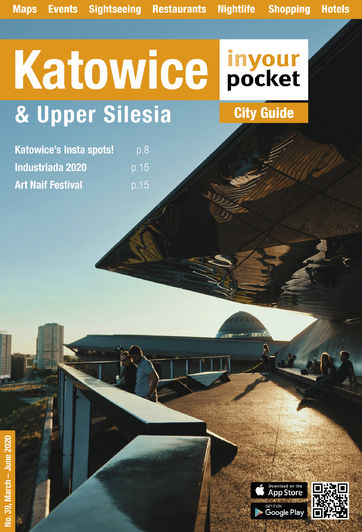Your Guide to Greater Silesia
Foreign travellers putting together their Polish tourist itineraries have a tendency to overlook Katowice and the greater Silesian Metropolis altogether. Sadly, the same goes for most Poles who long ago wrote Katowice off as nothing more than a coal-dust-covered backwater. Oh how wrong they are. The last 10 years or so has seen this historically working-class city emerge from a decades-long post-industrial funk, and Kato is now rapidly becoming one of the most innovative, culturally dynamic and economically vibrant regions in all of Poland. With vast infrastructure and renovations projects underway across the region, Katowice’s future looks even brighter.Beginning life as a small, German-speaking town called Kattowitz in the early part of the 19th century, Katowice was incorporated within the borders of a new post-WWI Polish state, and thanks to its disparate racial and cultural heritage offers visitors a fascinating jumble of German Gothic, inter-war Art Nouveau and some shockingly different socialist architecture, all intermingled with a growing number of glistening capitalist palaces. A sneaky glimpse under the cultural carpet reveals a host of cultural events in the UNESCO city of music, among other delightful surprises, Poland's largest cathedral, one of the best museums in southern PL, a vast park filled with truly magnificent things to see and do, a bar scene to shame many of the country's so-called cutting-edge cities, a super modern culture zone with a concrete building that looks like a spaceship and plays music from Close Encounters of the Third Kind at its centre. Marvellous. Within these webpages you’ll find information on everything there is to see and do in Silesia’s capital and the surrounding area, with honest, updated reviews on nightlife, restaurants, sightseeing, hotels, shopping, leisure activities, events and more.
But hold on a second, what about this whole Silesian Metropolis thing? Good question. Silesia (or Śląsk in Polish) is generally considered to be the region surrounding Katowice which has certain definite geographic boundaries (sorry Sosnowiec) in some parts, while seeming endlessly expansive in other parts. The somewhat nebulous 'Silesia' is not to be confused with the very concrete municipal province of Upper Silesia (Górny Śląsk) of which Katowice is the regional capital. Silesia then, in some ways, is an abstract concept and a geographical anomaly. The region spreads out from Katowice’s suburbs and sprawls into a matrix of towns and cities that were once historically connected through heavy industry and political autonomy. This shared history helped forge a strong regional identity and indeed Silesia has its own dialect (Silesian) which is a mix of Polish, German and Czech. In Your Pocket has travelled to the furthest reaches of Greater Silesia to try and uncover the regions sordid past and shed some light on its bright future. Katowice and Greater Silesia as a whole has a lot to offer the open-minded tourist, businessman and post-industrial enthusiast alike.
We've got you covered for your visit, but on a more practical side, you may also want to get some background info on the city before arriving, right? From the history of the city, how to even get there, how to make your way around once there, and to the very ambitious task of learning some Polish phrases to help you get by with the locals, we'll help you. Beyond all this useful information, we go further with basic facts, figures and useful local information to help you get full clued up before you even set foot on Polish soil. Happy learning.





Comments